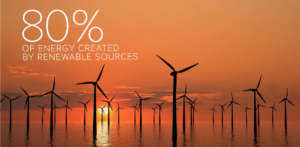(Rystad, 11.Mar.2018) — South American production is currently on a decreasing trend driven by large declines in Venezuela that are partially offset by supply additions in Brazil. As a result of new Brazilian fields coming online towards 2020, the supply is forecasted to again reach the level of 2016 by 2025. This article assesses the outlook for the South American E&P industry, illustrated by three key drivers: production, exploration success and spending.

Figure 1 shows South America’s total production, split by countries, from 2010 to 2025. Supply is on a decreasing trend since 2015, and last year the output averaged 11.22 million boe/d, which is expected to fall to 11.1 million boe/d in 2018. Brazil is the largest producer in the region, and the only country that has been increasing production despite the downturn. High level of investments made in the country before the oil price collapse secured production growth potential for the years to come, and thus we forecast a yearly growth of 9% from 2017 to 2020, fully driven by sanctioned fields starting to produce in the short to medium-term. These include the Buzios project, phases 66-68 of Lula, Iara, Tartaruga and Mestica, as well as contribution from other smaller projects under development.
Venezuela, on the other hand, has been the main contributor to decreasing production in the region. Output has plummeted from the level of 3.62 million boe/d in 2013 down to 2.9 million boe/d in 2017, particularly driven by large decline rates at El Furrial field. The country’s output is forecasted to continue to decline towards the early 2020s before flattening out at the level of 2.3-2.4 million boe/d. Supply in the remaining South American countries has been rather stable before 2014, with declines observed in Colombia, Argentina and Trinidad and Tobago from 2016 onwards. We currently forecast production in these countries to continue to fall in the future, particularly led by Colombia and Argentina, where fields like Loma de la Lata and Rubiales-Piriri exhibit decline rates of 10-20% per year.

Figure 2 shows the discovered volumes in South America from 2005 to 2017, split by life cycle and key unsanctioned projects. By far the best year for exploration in the region was 2010, when almost 16 billion boe were discovered. The Libra and Buzios discoveries in Brazil make up over 50% of the 2010 total discovered volumes. Other large discoveries include the Lula field (2006 and 2009), as well as Junin, Iara, Jupiter, and Orinoco project discoveries (2007 and 2008). Since 2010, there has been a visible reduction in discovered volumes. 2012 was an exception to the trend when Petrobras made the Carcara and Pao de Acucar discoveries in Brazil (now Statoil-operated). We saw some growth in discovered volumes in the region also in 2015. Back then, ExxonMobil made the Liza discovery, adding 1200 million boe in reserves in Guyana. The phase 1 of the project has already been sanctioned and start-up is planned for 2020. Last year, the company added additional 900 million boe to Liza by discovering Turbot and Snoek fields. Although rather little resources were found since 2010 compared to the historical levels, significant production contributions are expected from the discoveries that have been made in the past twelve years.

Figure 3 displays the total spending in South America over the period 2010-2025. Investments (capex and exploration capex) decreased by 9% last year and are forecasted to stay flat in 2018, growing to over $65 billion by 2025. In Brazil, production start-ups of fields within the Lula and Sapinhoa projects (where a large part of the development cost has already been incurred), as well as corruption allegations and lower oil prices, are the main triggers for decreasing investments in 2016-2018. Spending is estimated to recover from 2019 with Brazil’s Libra, Iara (Atapu North) and Pao de Acucar, Neuquen Basin tight gas developments in Argentina and the Liza discovery in Guyana contributing significantly to this growth. Post 2020, increasing investments are expected in the Statoil-operated Carcara project and the Lula Oeste field in Brazil, as well as the second phase of Junin-6 in Venezuela. The operating costs (opex) are expected to grow to $43 billion by 2020 and increase to $54 billion by 2025.
Conclusion
South America’s oil and gas output is expected to stay rather flat over the next five years, increasing to around 11.7 million boe/d by 2025. The declining production from Venezuela, Argentina and Colombia is partially offset by increasing volumes from key projects in Brazil such as Lula, Buzios, Iara and Libra. Post 2020, increasing contributions are also expected from Guyana with the first phase of the Liza discovery scheduled to be online in H1 2020. E&P investments are expected to recover post 2019 to support this growth, as key projects are approved.
***
